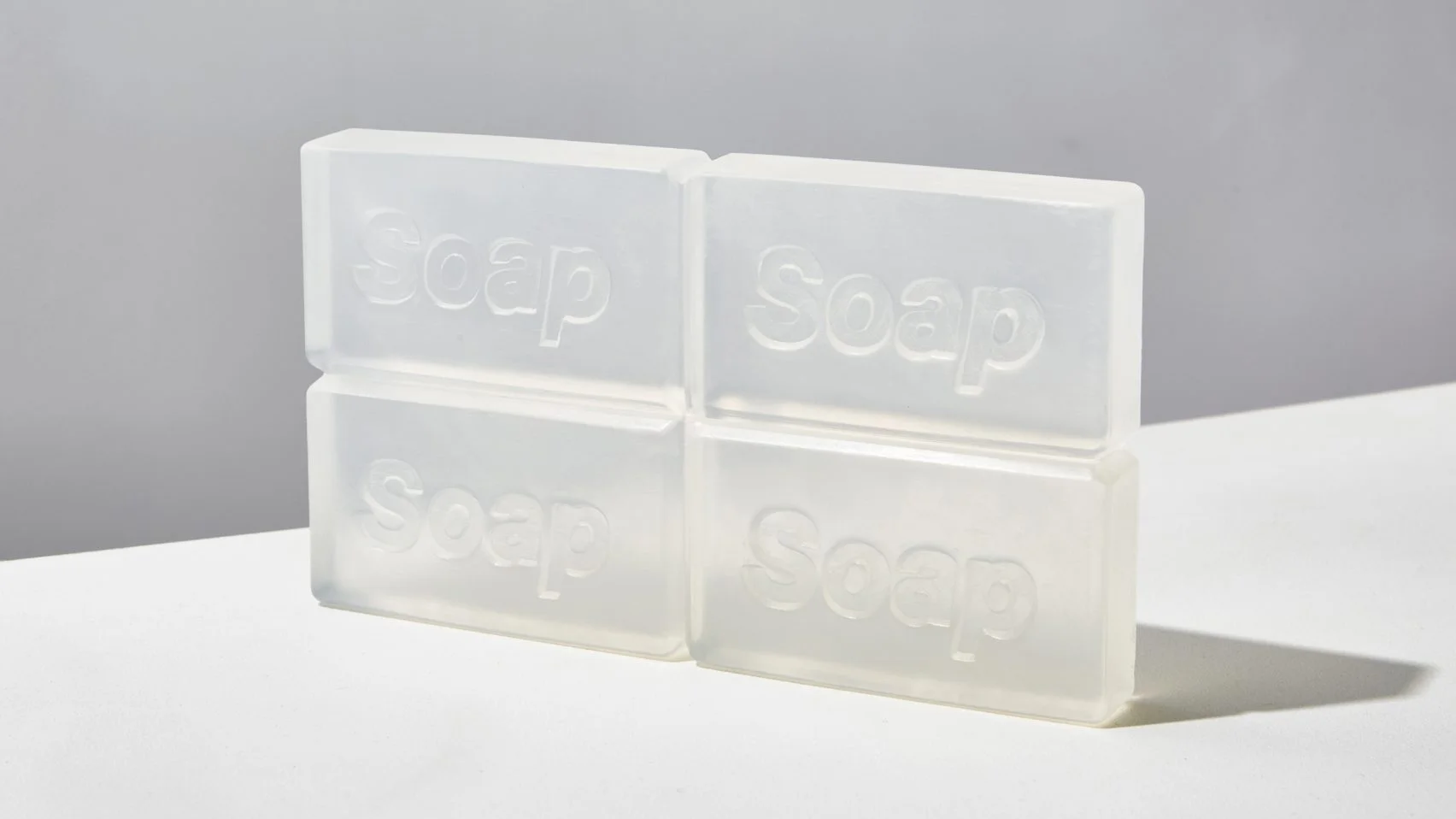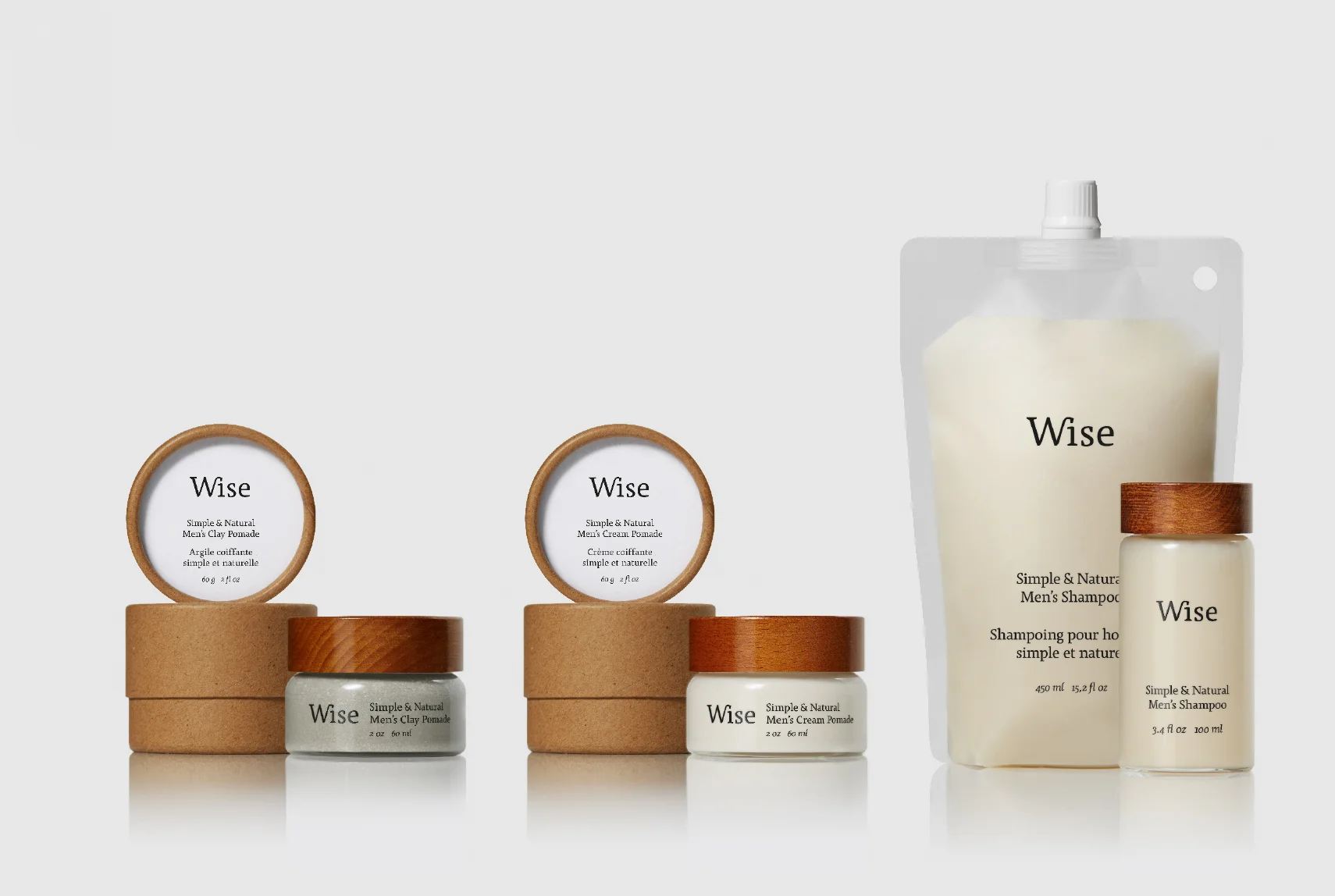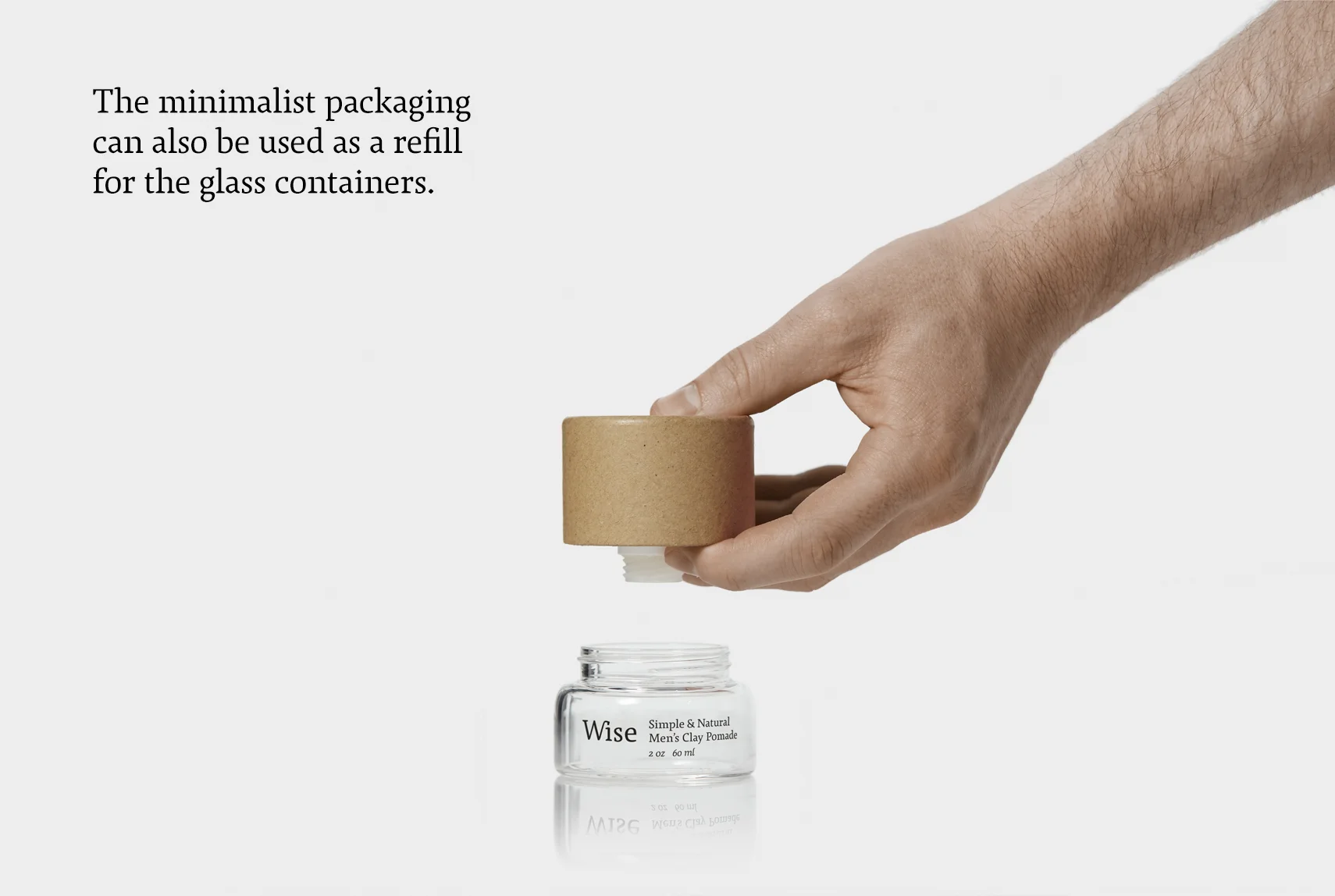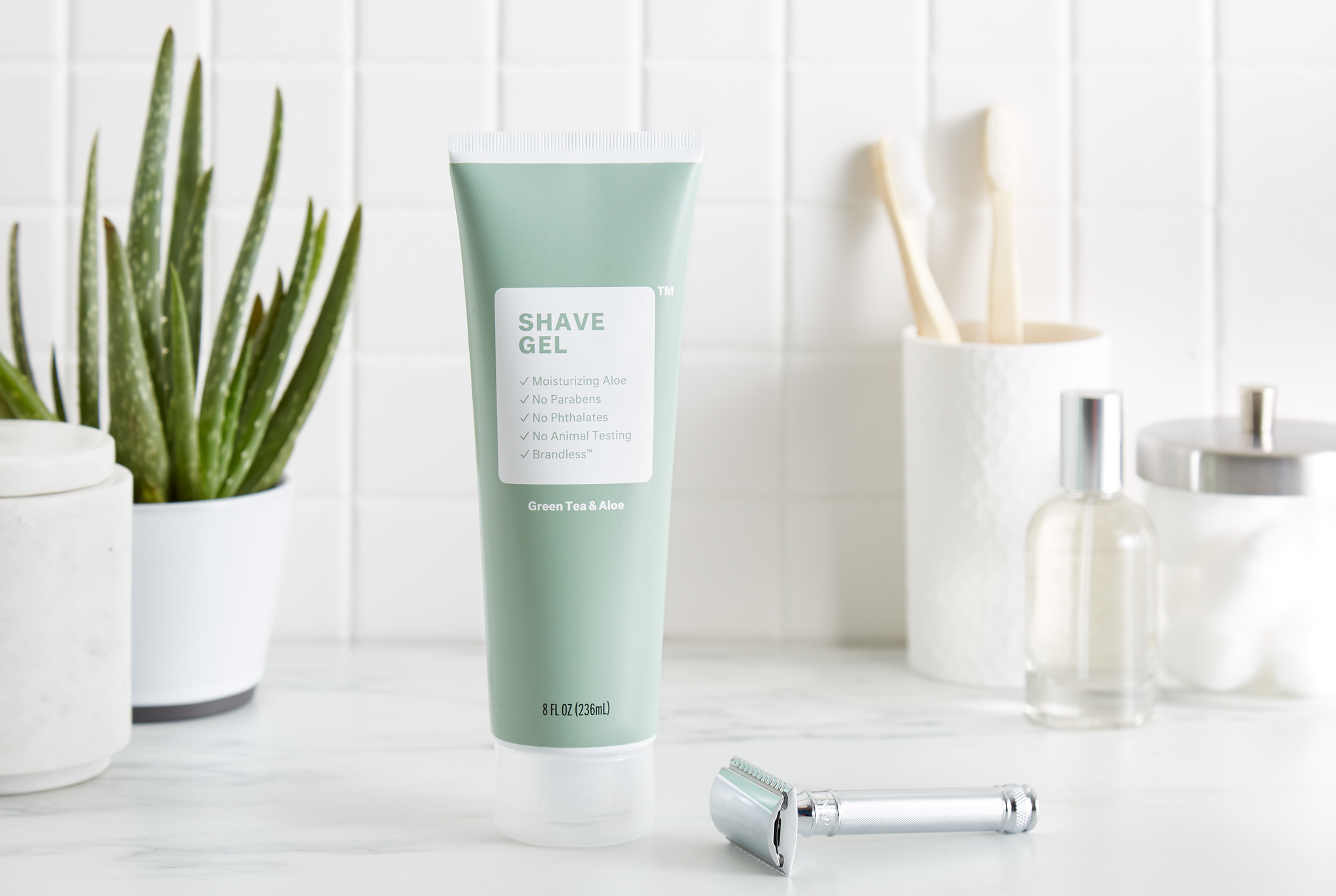Jasper Morrison's Good Thing Soap
In an increasingly busy world, quiet design, it appears, is on the rise. From minimalist design styles to paired back ingredients and simplified messaging, new brands are favouring the time-honoured Bauhaus ethos of 'form follows function'.
The innovation is beyond pure design; product ranges are appearing that also subvert our value systems, selling quality products at an increasingly affordable price, and using direct-to-consumer models, thereby revolutionising industries that have long enjoyed huge mark-ups, in game-changing brands from eyewear to beauty and fragrance.
The movement is becoming increasingly apparent across the design field, from branding to packaging and product. Here are some recent examples that are agitating staid categories and breathing new life into tired markets.
Wise Men's Care
Wise Men's Care is a new personal care range that combines stripped back branding with eco credentials. Designed by Canadian branding agency Ethos, the range offers innovation on many levels: their products are made from natural and healthy ingredients, whilst their paired-back packaging limits plastic use: each product is available in two different refillable containers - a reusable glass bottle, designed for the traveller, and a more robust cardboard container perfect for the intrepid outdoorsman.
Wise Men's Care
British designer Jasper Morrison has re-designed an everyday household product in a similar vein: his 'Soap' product, for Brooklyn-based design brand Good Thing, is a simple, translucent glycerin soap, sold in a mould of four, that can be snapped and arranged around the house at various locations.
Jasper Morrison's 'Soap'
The soap itself is similarly stripped back; it is made from only a few materials, and is fragrance-free, hypoallergenic and gentle on the skin.
Good Thing’s founder, Jamie Wolfond, told Dezeen:
"The idea to create a bar of soap stemmed from our belief that this elemental and historically rich tool should be elementary in its nature — it should do what it's supposed to do, do it well, and do it without anything unnecessary.”
Good Thing believe that every object in the home can be simplified to simplify the lives of its users.
Shaking up the fragrance world is A.N. Other, a Miami-based fragrance company developed by world-renowned perfumers, creating limited edition fine fragrances at an affordable price.
A.N Other
As a result of their 'direct to consumer' model - no retail overheads here - the brand can afford to work with different and innovative perfumers from across the globe. The brand creates collections of four simple limited edition fragrances every year - woody, oriental, fresh and floral.
A.N Other
Co-founder Gilad Amozeg states:
“We are resolute in offering an uncompromising portfolio at an affordable price that focuses on sustainability and ethically sourced raw ingredients and materials…Our moral compass has given us the guidance to strip away the unnecessary expense for the licensing, distribution and celebrity endorsements, allowing us to produce a world-class product that can be sold for less."
Socio Design were tasked to communicate this ethos, via brand strategy, name, identity, packaging and ecommerce. Of the project, Socio Design explains:
“The brand utilises the visual language of ‘default design’ as a way to simultaneously communicate high quality and value, leveraging the visual language of ‘utility’ to reference both modern luxury and staple goods. This enabled us to communicate the exceptional quality at the heart of the product whilst making it accessible to a wider audience.”
In a category filled to the brim with gaudy branding and neon packaging, consumer packaged goods company Brandless has emerged, with a mission: 'better stuff, fewer dollars'. Their one-price-fits-all approach applies across everyday food and household products, with a similarly paired back approach to packaging design, employing simple text and colour-blocked ranges.
Brandless
The company aim to highlight the 'BrandTax' each consumer unwittingly pays when buying traditional brands, instead focusing on 'just what matters'. This translates to standards such as fair-trade and gluten-free, whilst also being kinder to the environment through packaging design and materials. The brand also does good, partnering with the Feeding America charity to donate a meal each time a consumer places an order.
Brandless
Brandless founders Tina Sharkey and Ido Leffler state:
“With Brandless, we wanted to invent something completely fresh and new. Something that puts purpose into every product and message shared, and models a new kind of relationship between people and the companies built to serve them directly, with integrity, transparency, authenticity, and democratized access.”
Topline Tools is a similar brand to emerge, this time to revolutionize the hardware and DIY marketplace. The range offers clear, concise packaging stands out from what Topline Tools describes as a ‘visually manic hardware environment'.
Topline
The design agency Parsons Branding created a minimal range of packaging for the brand, using simple linear product illustrations to communicate clearly to an often time-poor consumer. The range is simple and uncluttered, communicating top quality at an affordable price range. The redesign includes product-specific illustrations, and re-written product instructions which aim to take the confusion out of DIY.
Quiet branding's rise across many different industries offers key points to consider for any brand:
- Do Good: Consider the environment in packaging design choices. Could single-use packaging be replaced with refillable or biodegradable packaging, less printing ink or materials? Ethical considerations could include fair-trade and charitable partnerships, which further enhance brand values
- Simplify: Your consumer is likely to be time-poor and visually over-stimulated. Consider ways in which your packaging can effectively communicate what it is, how it functions, and core brand values. For example, natural materials could communicate a product rich in natural ingredients
- Luxury Quality: Many brands are moving into the 'luxury quality' space, disrupting traditional business models by offering quality ingredients and luxury branding at an affordable price. Consider how your branding could communicate this ethos, through luxury yet utilitarian design

















